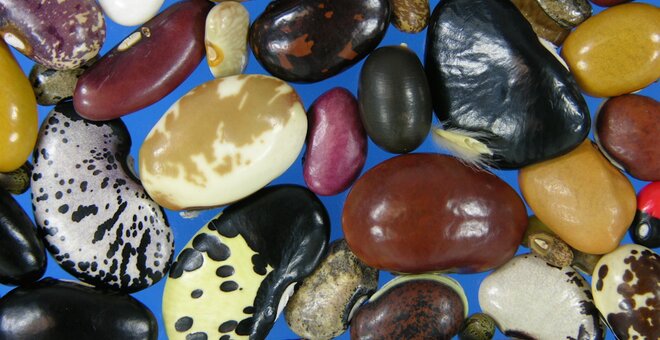Global System Project
2007-2011
The Global System Project (formally titled "Securing the Biological Basis of Agriculture and Promoting New and Fuller Use of Crop Genetic Resources") included the largest rescue of crop collections ever attempted. Starting in 2007, a vast network of partners regenerated nearly 75,000 seed and plant samples from 246 crop diversity collections in just five years—diversity that was in danger of being irretrievably lost.
Background
When the Crop Trust was first established, staff used different sources of information to prioritize activities. Both the Global Plan of Action on Plant Genetic Resources for Food and Agriculture and global crop conservation strategies suggested that many genebanks around the world held old material that was in danger of dying: seeds that had sat in storage too long, field collections that stood unattended. Further, breeders needed to know what was in the collections before they could put the material to use.
Will the seeds and plants still grow?
The Crop Trust and the United Nations Foundation, with funding from the Bill & Melinda Gates Foundation, partnered with genebanks at 86 institutes in 78 low- and middle-income countries to remedy this. These partners planted out seeds and cuttings from their collections to see if they would still grow. Those that did were multiplied and returned to the genebank. Duplicates were also sent to international genebanks and the Svalbard Global Seed Vault as a backup against any future loss.
Of the 95,000 samples initially targeted, more than 12,000 were already dead, and some genebanks planned collecting missions to hunt for the lost varieties in farmers’ fields.
How can genebank users find them?
The project also addressed the need to better document collections and to make that data available to genebank users. A new genebank data management package, GRIN-Global, was developed, and the first version of the Genesys catalog went online.
Not just seeds
Some crops—such as banana, potato, cassava, taro and yams—can only be kept as living plants or plant parts and transferring these to another place carries the risk of spreading disease. The Crop Trust helped genebanks culture nearly 6,000 of these plant samples in vitro to conserve them and allow them to be transferred to other genebanks while avoiding the risk of transferring diseases.
The project also developed protocols for storing tissues of cassava, aroids and yams in liquid nitrogen—a process known as “cryopreservation”—to allow genebanks to conserve these samples efficiently for the long-term.

This was the Crop Trust’s most urgent and complex activity in its first decade and it laid the foundation for a lot of our work since.
Related news
Gates Foundation Funds Rescue of World's Crop Biodiversity
ROME, ITALY (19 April 2007)—Recognizing that the fight against hunger cannot be won without securing fast-disappearing crop biodiversity, the Global Crop Diversity Trust and its partner the United Nations Foundation announced...
19 Apr 2007
19 Apr 2007
History's Biggest Biological Rescue to Save 100,000 Crop Varieties
Rome, Italy (15 February 2009)—Only two years after launching an ambitious effort to save endangered crop species, the Global Crop Diversity Trust announced today it is on track to save from extinction 100,000 different varieties...
15 Feb 2009
15 Feb 2009




